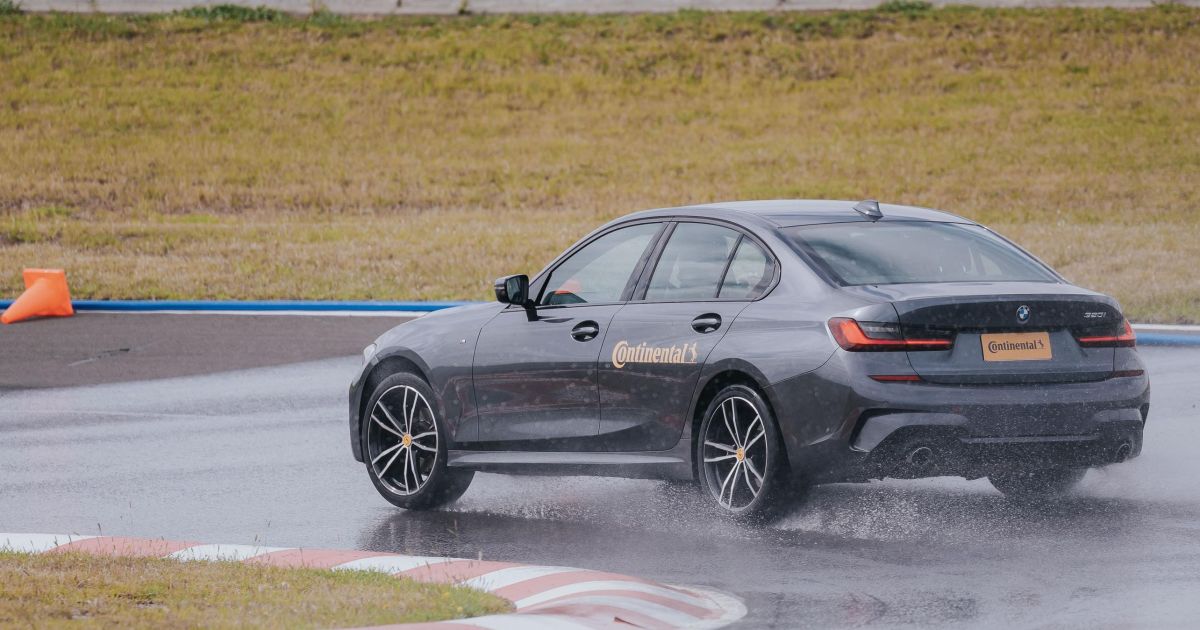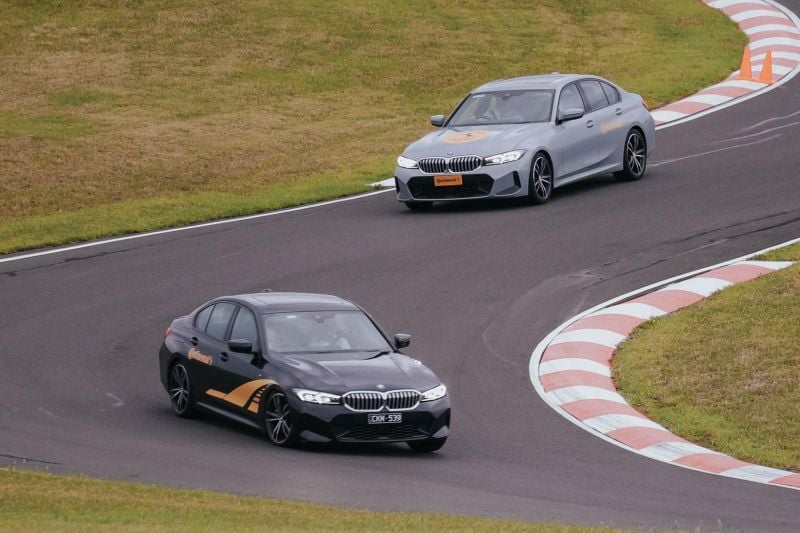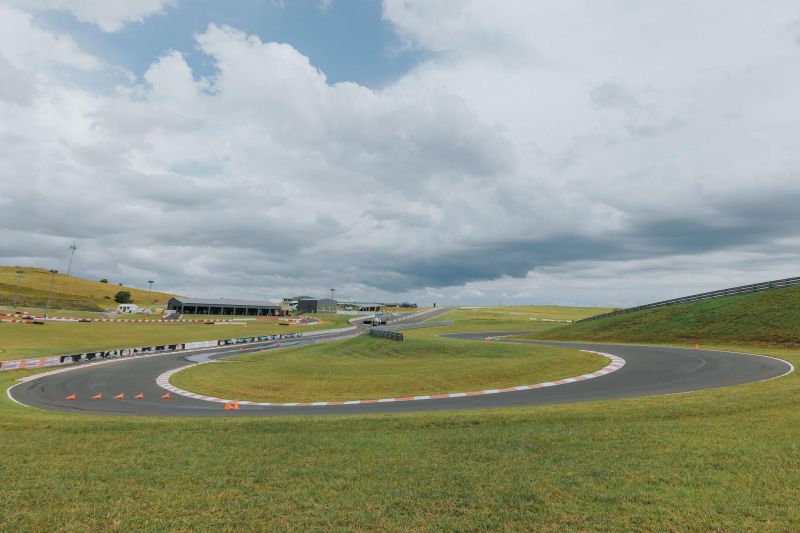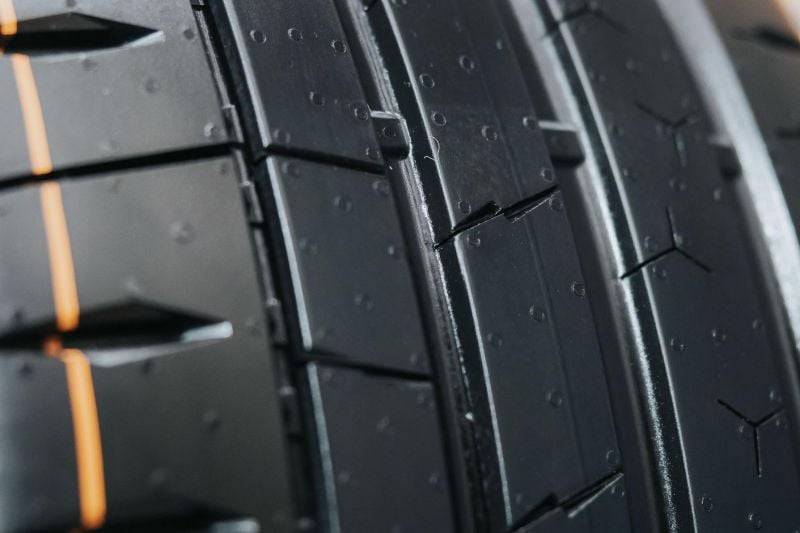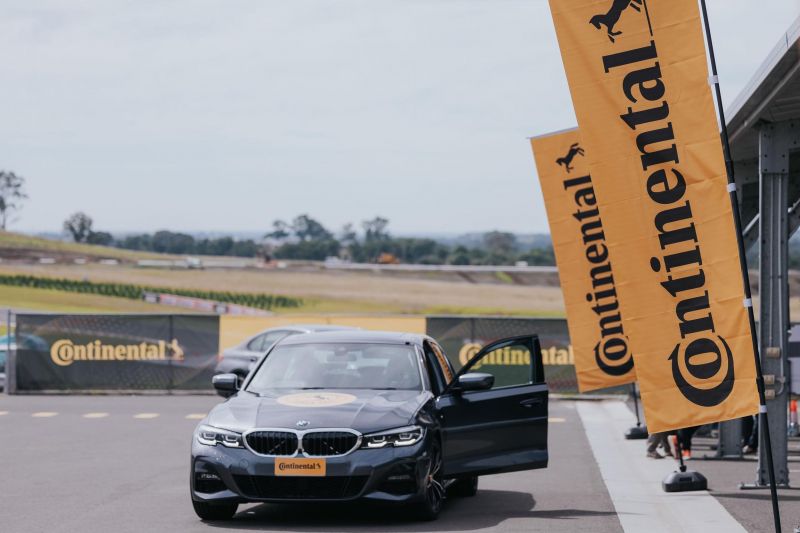Tires are our cars’ only point of contact with the road, and when purchasing a new set of tires, the impact they have on driving performance and safety is often underestimated.
Choosing the right tires is important and can even save your life.
As car manufacturers fight for Australian new car buyers’ hard-earned dollars, tire manufacturers are also engaged in their own battle for supremacy.
The performance tire market is particularly competitive and we took the opportunity to test a new entry in this category – the Continental MaxContact MC7.
Located about an hour west of Sydney, the tight and technical Luddenham Raceway hosted the track portion of our MaxContact MC7 test, while a combination of country road and highway driving rounded out the experience.
Challenging weather conditions dominate the picture. Here’s what we did that day.
We drove it in the wet
Continental developed two separate tests to compare the MaxContact MC7 to a competing tire on the Luddenham track, taking a closer look at wet braking and wet handling.
Interestingly, Continental decided to put the brand logo on the competitor’s tires, but further investigation revealed that it was a Bridgestone product.
A braking test was carried out at 80-0 km/h on the main straight, while a blind, downhill hairpin corner provided the framework for the handling session.
Both areas were subjected to a constant stream of water to ensure slippery conditions and we drove identical BMW 3 Series variants back to back with both sets of tires.
When braking hard, you immediately felt the Continental tires digging into the asphalt despite the moisture, which was impressive.
We excluded the total distance because the conditions did not match our own testing at Lang Lang and the data was difficult to verify, but the Continental-equipped car stopped 1.66m shorter than the competing tire.
The wet handling test was more of a subjective exercise aimed at pushing both tires to their limits when cornering quickly.
We had a total of four tests with each tire and the results were consistent throughout.
The MaxContact MC7 had plenty of grip during initial hard turn-ins and tended to progressive understeer, which was predictable and easy to manage.
On the other hand, the competing tire was similar at corner entry, but lost grip more quickly, resulting in more wrestling with the steering wheel.
We hit the public roads in the afternoon and there was no need for tubes as the skies opened up in typical East Coast style.
Our route back to Sydney was mostly along winding country roads, which can be a nightmare in the wet, but our BMW 330i felt safe at all times.
Continental says the focus is on wet weather performance. Apparently the PR team has high-ranking friends who are organizing this rain.
We tried to find out how loud they are…or not
Despite the mix of heavy rain and uneven road surfaces, there was no tire noise to be heard when driving the MaxContact MC7.
We left the stereo on mute for most of the trip and the interior remained quiet so the occupants could chat undisturbed.
Crucially, it was consistent across different road surfaces, from suburban streets to country roads and highways. High-performance tires from Europe often struggle to keep noise down on Australia’s bumpy country roads – Continental says these roads were a focus for the MC7.
Unfortunately, none of the cars used for this part of the launch were fitted with alternative tires, so it was difficult to truly assess where the MC7 stands compared to the competition.
We also didn’t have access to current generation MaxContact MC6 tires.
We found out about its competitors
Continental claims that the MC7 was designed specifically for the Asia-Pacific region, with a focus on wet weather performance.
It was certainly the right weather to demonstrate this, although it’s difficult to know how the MC7 will perform until we’ve put it through its paces alongside some of its big rivals.
Continental is positioning the MaxContact MC7 as a competitor to the Michelin Pilot Sport 5, Goodyear Eagle F1 Sport and Bridgestone Potenza RE003, all of which are touted as high-performance street car options with a power surplus.
Want to see a CarExpert tire test?
